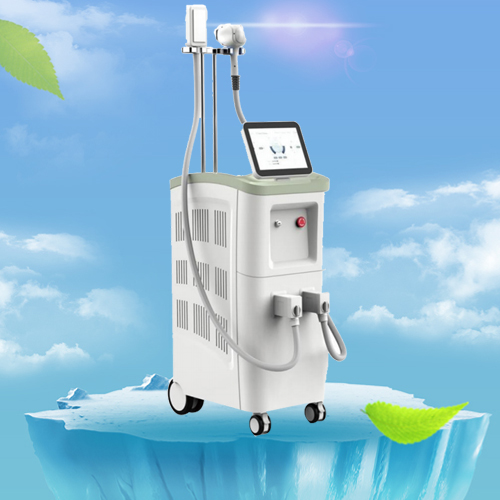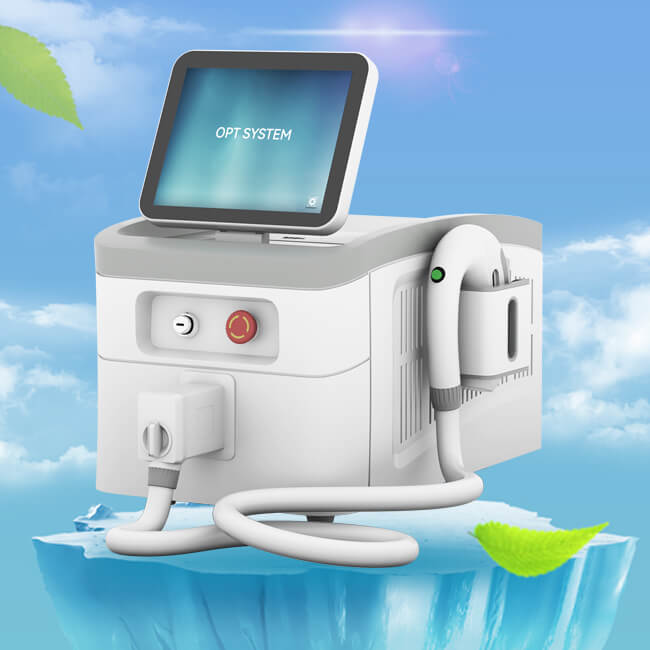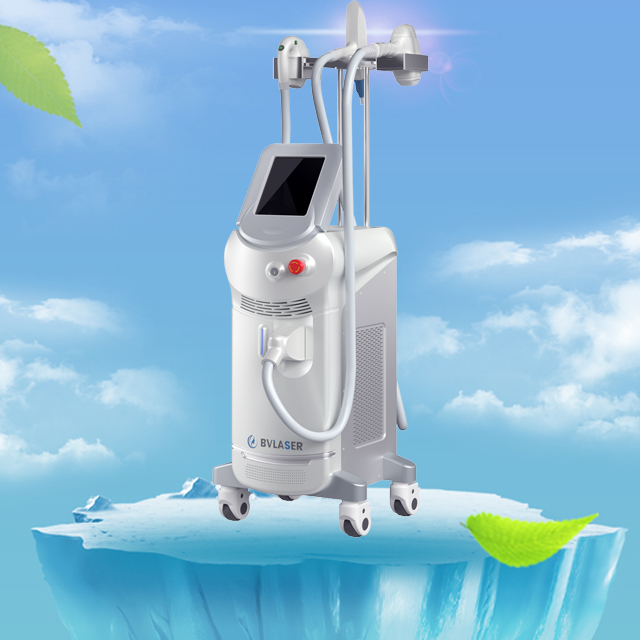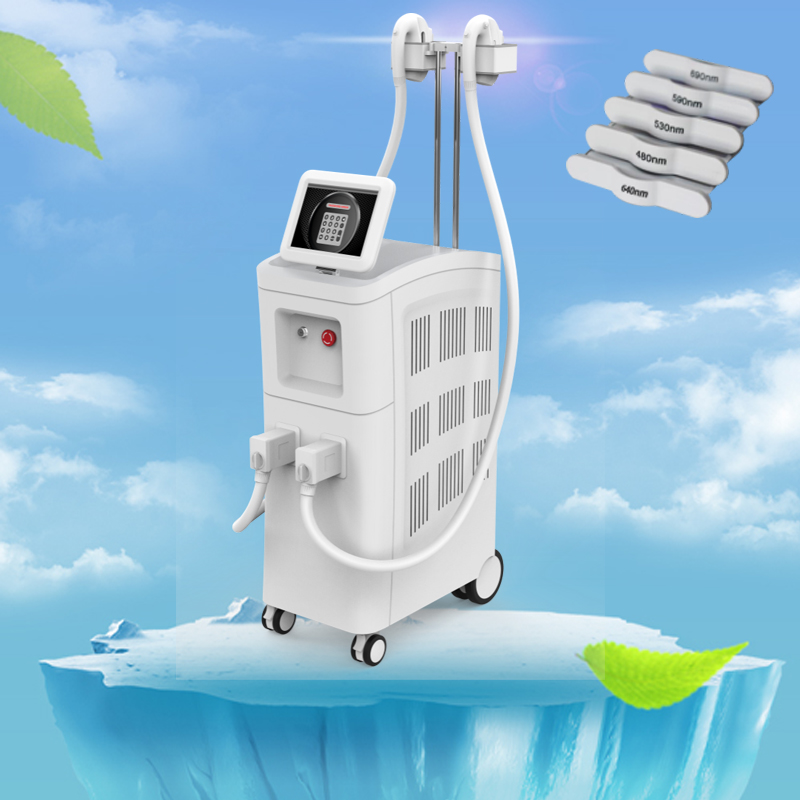How long does laser hair removal last?
Author:baishilf Time:2024-06-12 15:59:56
Diode laser hair removal machine is a long lasting form of hair removal that damages or destroys the hair follicle. It is not necessarily permanent. However, the hair may regrow, particularly if the follicle is damaged and not destroyed during the laser hair removal procedure. For this reason, many doctors now refer to laser hair removal as long-term hair removal rather than permanent hair removal. Bestview Laser is a professional laser hair removal machine manufacturer, we have portable diode laser machine for sale.

How does laser hair removal work?
Laser hair removal uses light to target the pigment in individual hairs. The light travels down the shaft of the hair and into the hair follicle. The heat from the laser light destroys the hair follicle, and a hair can no longer grow from it.
Hair follows a unique growth cycle that involves resting, shedding, and growing periods. Recently removed hair that is in a resting phase will not be visible to the technician or laser, so a person may need to wait until it regrows before removing it. For most people, laser hair removal requires several treatments over the course of 2 to 3 months.
Is laser hair removal permanent?
Hair removal from a destroyed hair follicle is permanent. However, people who undergo hair removal can expect that some hair in the targeted area will grow back. Over time, it is possible to treat the area again to reduce the number of hairs that regrow. In some cases, it may even be possible to eliminate all hair.
Whether or not hair grows back depends on numerous factors, including the type of hair that regrows and the skill of the person removing the hair. Most people find that when hair regrows, it is lighter and less noticeable than it was before. This is because the laser may damage the hair follicle even when it fails to destroy it.
If a hair follicle is damaged but not destroyed, the hair will eventually regrow. It can be difficult to destroy every single hair follicle, so most people will see some hair regrowth. When hair regrows, it is possible to treat it again, so people who want to remove all the hair may need several treatments.
In some cases, hair may be too light, too short, or resistant to treatment. In these cases, a person might choose to use other hair removal methods, such as plucking stray hairs.
How long does laser hair removal last?
Laser hair removal is permanent when the hair follicle is destroyed. When the hair follicle is only damaged, the hair will eventually regrow. The amount of time it takes for the hair to regrow depends on the person’s unique hair growth cycle. Some people have hair that grows more quickly than others. Hair that is in a resting phase will grow back more slowly than hair that is in another phase. Most people can expect some hair regrowth within a few months. Once this happens, they can opt for more removal treatments.
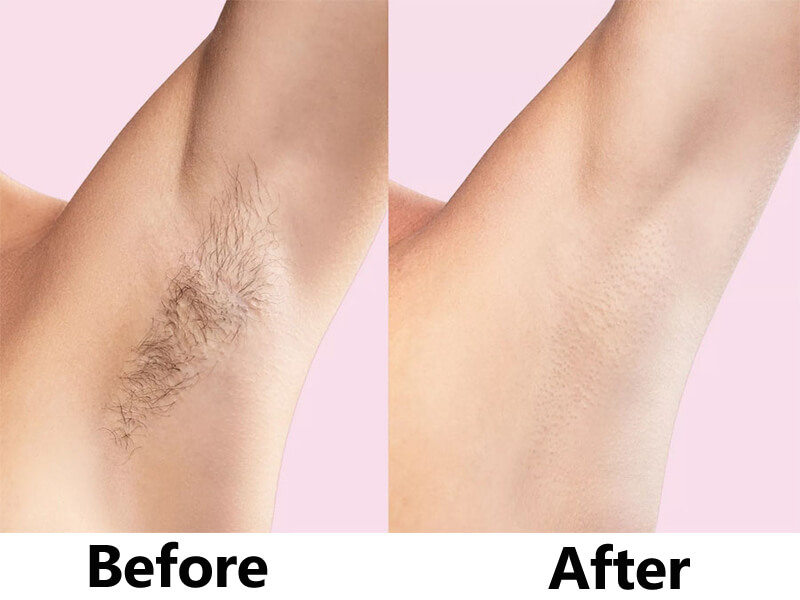
Does skin or hair color make a difference?
Hair removal works best on people with light complexions who have dark hair. This is because the pigment contrast makes it easier for the laser to target the hair, travel into the follicle, and destroy the follicle.
People with dark skin or light hair may need more treatments than others and may find that more hair grows back. To permanently remove hair, the technician must know how to target the hair and choose the right type of laser.
Side effects and risks of laser hair removal treatment
During laser hair removal treatment, some people experience burning, stinging, or discomfort. For this reason, many technicians apply a numbing cream to the area they are treating. However, some people may have an allergic reaction or skin irritation in response to the numbing cream.
Less common side effects following laser hair removal can include the following:
1.Burns and blisters. There is a risk of burns and blisters if laser hair removal is not done correctly. When a qualified practitioner carries out the process, however, burns and blisters are rare.
2.Laser hair removal uses high-heat lasers. A practitioner may apply a cooling device to a person’s skin just before the laser is used. This helps to prevent the laser from burning the skin.
3.Scars. Scars are typically not a side effect of laser hair removal. However, if the practitioner makes an error, scarring can occur. This should not be an issue with most qualified practitioners. Scars may also form if people do not care for the treated area correctly afterward.
They should treat the affected skin as if it had been sunburned to avoid further damage. This means keeping it moisturized, protected from light, and checked regularly for signs of infection.
Providing a detailed medical history and discussing risks and benefits can help the provider determine the right treatment, reducing the risk of serious side effects. People who experience intense pain, a fever, crusting, blisters, or other signs of skin damage or infection should seek medical attention.
Cost of laser hair removal treatment
Most people require multiple sessions, so people should talk to their treatment provider about how many sessions they will need to work out the overall cost. Because laser hair removal is almost always a cosmetic procedure, insurance is unlikely to cover it.
The total cost of laser hair removal depends on several factors, including who performs the treatment. Skilled providers such as dermatologists and plastic surgeons may charge more but are less likely to cause injury or side effects.
Other factors affecting the cost include:
1.The number of treatments required.
2.How much hair regrows.
3.The number of hairs targeted.
4.The size of the area requiring treatment.
Removing a small amount of hair from a region such as the upper lip will cost less than removing hair from the entire leg.
Laser hair removal during pregnancy
Experts do not recommend laser hair removal for people who are pregnant. This is because scientists have not carried out any human studies that prove the safety of laser hair removal during pregnancy.
Pregnancy causes hormonal changes in a person’s body. This can commonly cause extra hairs to grow in unwanted places. While this growth can be embarrassing, the hairs often go away on their own. If the hairs do not go away unaided, a person may want to try laser treatment after their pregnancy. Doctors may ask them to wait a few weeks after giving birth before they have the treatment.
Myths about laser hair removal
There are several unfounded myths surrounding laser hair removal:
1.Laser hair removal causes cancer.
The myth that laser hair removal therapy can cause cancer is unfounded. The lasers are specially designed to pass through the skin cells and target only the hair follicles deep within the skin. The lasers used in laser hair removal do produce a small amount of radiation. However, this radiation is not thought to be harmful, and there is no evidence that laser hair removal therapy causes skin cancer.
2.Laser hair removal causes infertility.
Again, there is no evidence that laser hair removal causes infertility. The lasers only penetrate the skin and do not reach or affect any other organs. Laser hair removal is usually safe, even in sensitive areas such as the groin.
3.Home kits are just as good as seeing a dermatologist.
Home laser removal kits are available for people who want to remove unwanted hairs without going to a dermatologist. Many people may experience modest results from using these kits, such as lighter or finer hairs. However, home kits are not the same as the powerful medical devices used by qualified practitioners.
Laser hair removal can significantly reduce the amount of body hair a person has. In most people, some hair will regrow over time. Even when hair does regrow, there will be less overall hair, producing a smoother appearance. To get a realistic understanding of what to expect from laser hair removal, discuss treatment goals with a doctor or hair removal specialist. Some skin complexions and hair types produce better results than others. The only way to know for sure what to expect is to talk to a doctor, a dermatologist, or another skilled practitioner.






